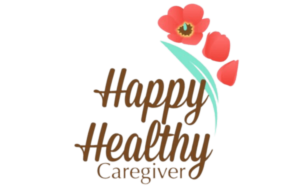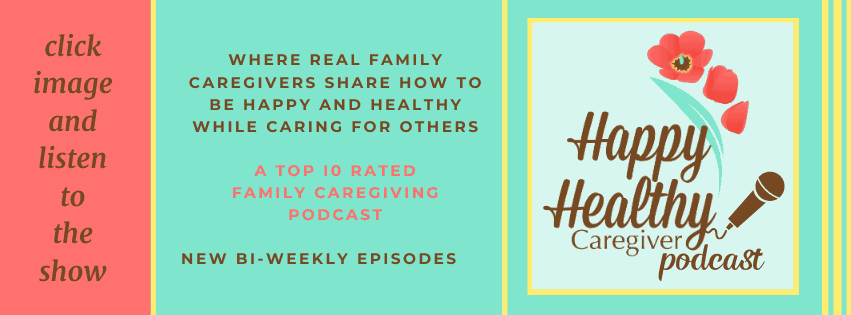Help for Solo Family Caregivers
A US News and World Report article recently included part of my family’s caregiving story about coordinating a parent’s care with siblings. This article reminded me how LUCKY I am to share caregiving responsibilities with my brothers and sisters.
We were known as The Beighey Bunch – three boys and three girls. During my childhood, there was always a flurry in our house. We had countless school activities, sporting events, medical appointments, grocery trips with multiple shopping carts, and we were always celebrating someone’s birthday. When I lived at home, we came together to get the household responsibilities done. The girls mostly worked in the house and helped mom (one of my jobs was to rake the shag carpets!). The boys worked mainly in the multiple-acre yard and helped dad. We always had to do our chores before diving into the fun.
As siblings, we went our separate ways during college and early adult years, except for my older brother, Tom. He was born with a developmental disability and primarily lived with my parents.
When our parents’ health declined, we had to figure out how to work together to fulfill the caregiving responsibilities. At first, the requests from my parents were occasional, and then in 2014, after a series of crises, their needs became all-consuming. While the care load was never equal among my siblings – I’m grateful we had each other.
What it Might Be Like for a Solo Caregiver
Many caregivers don’t receive family support. They may be an only child or have siblings that don’t help with caregiving responsibilities. How would this feel? I’m not coming up with many advantages except for fewer opinions for decision-making and day-to-day caregiving.
The disadvantages of being a sole caregiver seem more prominent. Most likely, there is little to no flexibility to drop everything and live spontaneously. The compounded stress and anxiety of solo decision-making appear overwhelming and emotionally exhausting. The potential financial challenges weigh heavier. Do they have people to vent to that 100% understand the parental personalities and history?
With the care responsibilities being single-threaded, the fear of how our loved ones will be cared for if something happens to us magnifies. I imagine one of the worst parts would also be the deep loneliness after losing a loved one.
Piece Together a Focused Care Team
With caregiving comes an overwhelming list of responsibilities. Many hands make light work or at least lighter work. Whether a primary caregiver has siblings or not, assembling a care team to help share the physical and emotional load is still essential. Otherwise, the risk of a breakdown or caregiver burnout is too significant.
I coach family caregivers who are currently in a solo caregiving situation to compile their care team. Here are several options to consider. One or more of these may be a significant source of help for you.

Solo No More - 11 Tactics to Try
You may think you have it all under control and claim you are ‘fine.’ But caregiving typically doesn’t get easier. More likely, our care recipients lose more independence as their conditions progress. As pragmatic primary caregivers, we must expect and proactively prepare for a caregiving crisis. There is no better time to create a sustainable caregiving plan.
What if our care recipient craves a break from us as their primary caregiver! Interacting with multiple people infuses their day with excitement and variety. No one wants to feel like a burden to one person. This care team will also be there to support you during the caregiving journey.
1. Reach beyond immediate family
While the immediate family is the apparent source of help, it’s not the only place. Get creative about who can play a supporting role on your care team. Assess your situation and identify the sources of your limitations and frustrations. Make a list of these tasks and activities. Who do you know in your network that could potentially assist?
Recognize their strength in this area and be specific with your request for help.
Long-distance friends and extended family also have roles they can assume on the care team.
2. Encourage your care recipient to help
Just because your care recipient may want the help doesn’t mean they need it. Tasks may frustrate them and take longer, but they must continue to do what they can for as long as they can.
Participating in these activities of daily living will provide them value, physical activity, and mental stimulation – all essential things to maintain their quality of life.
3. Contact a local elder law attorney
A local elder law attorney knows what state and local services and providers are available to you. They know what documents are essential to have on hand and how to navigate through the red tape and loopholes.
To find a local elder law attorney, visit the National Academy of Elder Law Attorneys.
If your care recipient isn’t an older adult, contact the organization(s) affiliated with their condition (e.g., Alzheimer’s Association) or ask your local health providers for professional contacts.
4. Find a local caregiver support group
Next to an elder law attorney, the best practical and emotional support is a caregiver support group. These are people who understand the caregiving journey because they are living it. They’ll share specific resources which have helped them, such as home care, hospice, respite, housekeepers, and even mobile dog groomers.
They’ll be honest with you about what caregiving strategies have worked and where there have been pitfalls.
You’ll leave with information to address the worry of the day, and you’ll no longer feel as frustrated or invalidated.
Find guidance on finding a caregiver support group in your area here.
Suppose you don’t find a local support group. In that case, there are virtual support groups such as the Happy Healthy Caregiver Virtual Cafe events or the Self-Care Support for Caregivers Facebook Group.
5. Get organized
Peace of mind is a gift from being an organized caregiver. Some people prefer to keep things in binders, but traditional files and binders are heavy to lug around, and sometimes you don’t have what you need on you. A paper-only system can lead to a delay in the completion of a nagging task and adds more to an overflowing to-do list.
There are smartphone apps that help keep this information at your fingertips! Many apps allow you to store, organize, and securely share your important documents. You can store information for your care recipient(s), your immediate family members, yourself, and pets. Here’s just a few ideas of what you could safely store in some apps:
- Medication list
- Insurance cards
- Vaccination cards
- Power of Attorney documents
- Healthcare contact sheet
Usually, you can also decide with whom in your care team you want to share this information.
6. Complete home health paperwork
No family caregiver is superhuman. We get sick, called into work suddenly, or have to be somewhere quickly in the case of an emergency. Regular breaks are also needed to feel re-energized and refreshed.
Even if you think you will never use it, fill out the paperwork for a local home health company. Each company has a standard initial process. This assessment usually has to be done in person. You’ll also want the opportunity to ask questions, without being in a crisis.
7. Include technology as part of the care team
As mentioned above, smartphone apps are one solution to help stay organized and share information. Tasks and messages can be shared discretely with the other members of the care team. Push notifications can be enabled so you won’t miss a task reminder or new message.
There are many other ways technology can provide peace of mind and lighten your caregiving load. Technology can help you with grocery shopping, meal planning, medication management, physical safety, financial assistance, health appointments, communication, and companionship.
8. Understand when to involve hospice
Most new family caregivers are shocked to learn Medicare does not pay for long-term care. Medicaid does provide some long-term benefits. However, if your care recipient doesn’t qualify for Medicaid or have long-term care insurance, the financing options are limited.
Medicare does pay for hospice care, assuming your hospice provider is Medicare-approved. Many caregivers who utilize hospice services regret they didn’t explore this option sooner. If your loved one is in a place where they have Medicare and are no longer seeking life-extending treatments, hospice may be an option to consider that will provide you as the caregiver with extra help.
Hospice providers usually offer assistance with regular personal care for the care recipient, chaplain services, medication management, short-term respite, supply ordering, and caregiver support.
9. Schedule respite
Respite is a short-term, in-person, or online break for family caregivers.
Some states will pay someone privately to give a family caregiver respite. Some local organizations may also offer volunteers to provide respite. You’ll hear about these in the virtual and in-person caregiver support groups.
As a Brutally Beautiful Ambassador and Volunteer Program Leader, I want to encourage you to apply for a nature-based healing retreat. I’ve been privileged to see how respite transforms caregivers during these retreats. After the in-person event, we remain connected through our virtual rope team (s).
The COVID-19 pandemic expanded the respite options for family caregivers by shifting to virtual programming and support.
For many months, our Atlanta Happy Healthy Caregiver Community support group met via Zoom until we felt it was safe to reconvene in person. Happy Healthy Caregiver Virtual Cafes were also added as a fun mid-day break for caregivers to play games, share stories, ask questions, and win prizes.
10. Appoint a self-care cheerleader
Your close friends want to see you happy and healthy. Designate someone who has your best interests in mind to be your self-care cheerleader. Share some of your self-care intentions with them and ask them to check in with you weekly or bi-weekly to see how things are going and hold you accountable.
I will also be a part of your self-care cheering squad. Join the HHC email list and enjoy this rejuvenating Caregiver Anthem playlist on Spotify or Pandora.
11. Give yourself some grace
Caregiving is a season of life. Be intentional about tapping into your emotions and personal needs so you can sustain and find joy in the day-to-day journey. Try to take small action on what is in your control and practice accepting and letting go of what is not within your reach. When guilt surfaces, replace it with a bit of grace.
Hindsight into my caregiving journey helped me create the Happy Healthy Caregiver Manifesto. Perhaps this declaration of my core beliefs related to caregiving will help you, or inspire you to write your manifesto.

